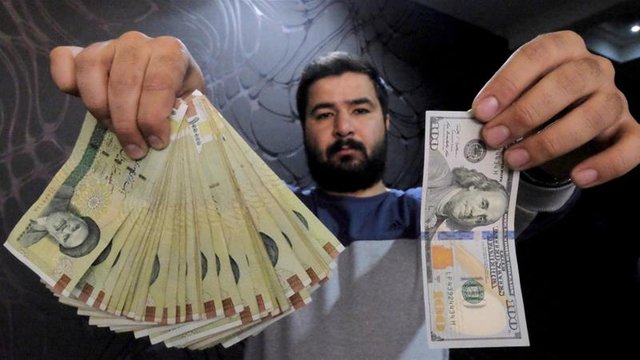Iran scrambles to halt rial's slide amid threat of US sanctions

Iran announces to enforce a 42,000-rial exchange rate after the rial hit an all-time low against the dollar on Monday.
Iran will enforce a 42,000-rial exchange rate for the US dollar as of Tuesday, in a move expected to end a currency crisis that has angered Iranians.
The Iranian rial hit an all-time low against the dollar on Monday, when the majority of exchange offices in Tehran turned off their indicators amid fluctuating rates.
Each dollar was reportedly trading for more than 60,000 rials on Monday, posting a whopping 16 percent rise against the Iranian currency compared to Sunday morning.
"The country's exchange rate will be 42,000 rials," First Vice President Eshaq Jahangiri said in a broadcast speech, after an emergency cabinet meeting held on Monday evening.
This will mark the end of a dual exchange rate system, including a preferential rate set by the Central Bank of Iran and a free market rate.
"We will not recognise any other exchange rate in the market. To us foreign currency sold at any other price would be illegal," Jahangiri said, easing concerns after rial's sharp fall wreaked havoc for two days.
This week's currency turmoil came after another significant fall in the value of the rial in February, when the government was somehow successful in curbing the fluctuations through a crackdown on illegal traders as well as raising the interest rates.
However, those policies were proved to work only as short-term remedies when the rial began its downward spiral in late March following the Nowruz holidays, which mark the beginning of the Iranian fiscal year.
Chaos, disappointment
On Sunday afternoon, the majority of exchange offices in Tehran's Ferdosi St, where many registered and unregistered currency traders do business, refused to trade the major global currencies, waiting for the markets to stabilise.
As a result, long lines were formed in front of the few offices that did sell up to maximum $1,000 to each customer at a subsidised rate - fixed then at 49,500 rials for each dollar.
At one office, a man wrote down the names of the people standing in line to let them in, while a police officer guarded the door.
At a safe distance from this office and police forces, which were roaming the street, a man, seemingly in his fifties, was making known to pedestrians around him that he was willing to buy the dollar and euro at free market rates.
"Most of these offices have stopped working. If they do buy, they offer prices as low as the preferential rate," Alizadeh told Al Jazeera, refusing to give his first name.
"I would pay up to 55,000 rials for each dollar, because I have customers waiting for it," he said as markets prepared to close on Sunday afternoon.
Rial's slide is believed to affect the livelihood of ordinary Iranians by pushing up the price of imported goods, among other reasons, as well as leaving an impact on businesses.
"The market's reaction to such circumstances is a complete stop. No trader issues invoices until the exchange rates are stable," Mohammadreza Ziaei, a businessman who runs a trading company importing raw materials for food industry, told Al Jazeera.
"Raw materials are often sold on two-month credit. After the rial's slide, the products I sold two months ago, not only fails to yield a 10 percent profit I expected, but I incur damage."
Non-Economic causes
In his remarks, Jahangiri referred to both external causes as well as efforts by specific domestic political factions as causes of the rial’s devaluation.
"It seems that non-economic causes and unpredictable factors have been effective in creating this issue."
The currency problem comes ahead of an expected decision by the US President Donald Trump on May 12 on whether Washington will re-impose sanctions on the Islamic Republic, lifted as part of Iran’s 2015 nuclear deal with the world powers.
Some experts believe the uncertainty over the fate of the nuclear deal, known formally as the Joint Comprehensive Plan of Action, is among the reason behind the collapse of the rial.